

North Carolina Lithic Material
| Name | Natural | Non-heat treated points | Heat treated points | Color details | Primary found in: | Associated Formation / Member |
|
Aaron Slate AKA: Sandy Tuff |
 |
 |
Ranges from a pure greenstone to a almost pure argillite | Northeastern North Carolina | Aaron Formation of the Virginia Carolina Slate Belt | |
| Abbyville Gabbro |
 |
 |
Dark greenish gray | Northeastern North Carolina | Abbyville Gabbro Formation | |
|
Amber Chalcedony AKA: Weathering Amber Chalcedony |
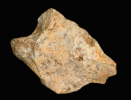 |
 |
When freshly fractured is a translucent amber with snowflake like inclusions, when weathered has a chalky white to yellow appearance | Northeastern North Carolina | ||
|
Argillite (Generic type) |
 |
 |
Light to dark green, but may range to various shades of gray. | North America | Varies | |
| Bangor Chert |
 |
  |
 |
Translucent and banded, ranging in color from black to a dark bluish gray or greenish | Southwestern North Carolina | Bangor Limestone formation |
|
Chepultepec Chert
Knox Chert Variant (Ridge and Valley Chert) |
 |
 |
 |
Ranges from yellow to white and oolitic | Western North Carolina | Chapultepec Member of the Knox Formation |
| Chilhowee Mudstone |
 |
 |
greenish-gray in color | Western North Carolina | Chilhowee Group | |
| Cid Meta- Mudstone |
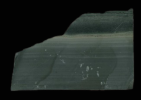 |
 |
Thinly laminated tuffaceous argillite mudstone ranging from a bluish gray to a greenish gray. | South central North Carolina | Cid Formation of the Albemarle Group | |
| Conococheague Chert |
 |
 |
 |
Ranges from a gray to a bluish gray, brownish gray, or black. Small blue to white inclusions may be present. | Northwestern North Carolina | Conococheague Limestone Formation |
|
Copper Ridge Chert (Ridge and Valley Chert) |
 |
 |
 |
Ranges in color from medium to dark gray to black | Western North Carolina | Copper Ridge Member of the Knox formation |
| Crystal Quartz |
 |
  |
clear colorless stone similar to clear glass | Eastern North America | ||
|
Erwin Quartzite AKA: Erwin - Antietam Quartzite, Hesse Quartzite |
 |
   |
Ranges from bright white to light gray, tan, brown, pink, or red. A green brown variation is reported in Amherst County, Virginia | North Carolina | Erwin Formation of the Chilhowee Group | |
| Floyd Church Meta-Argillite / MetaMudstone |
 |
 |
Gray | Southwestern North Carolina | Floyd Church Formation of the Albemarle Group | |
|
Fort Payne Chert AKA: Iuka Chert, Lauderdale Chert |
.jpg) |
 |
Ranges in color from black to a grayish blue, or white to a bluish white. Bluish gray is the predominate color with bluish hues | North Carolina | Fort Payne Formation | |
|
Harpers Ferry Quartzite AKA: Oolitic Quartzite |
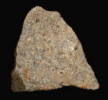 |
 |
Ranges from a light gray to light blue with round speckles colored dark gray to a bluish gray or cream to light gray | Northeastern North Carolina | Possible Harpers Formation of the Chilhowee Group | |
|
Honaker Chert / Dolomite AKA: Nolichucky Chert |
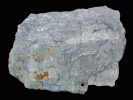 |
 |
 |
Dolomite is a light to medium gray with banding present, minor chert nodules of dark gray to black with algal banding | Northwestern North Carolina | Honaker Formation / Nolichucky Formation |
| Kingsport Chert |
 |
 |
 |
Ranges from white to a medium to dark gray. | Western North Carolina | Kingsport Formation of the Beekmantown Group |
| Knox Chert |
 |
  |
Dark blue to bluish gray with translucent mottling. Red Knox Chert has a reddish color with slight mottling. | Western North Carolina | Knox Formation | |
| Lenoir Chert |
 |
 |
 |
Dark Gray | Western North Carolina | Lenoir Limestone Formation |
|
Little Cattail Creek
Chert / Chalcedony AKA: Williamson Chert, Dinwiddie Chert |
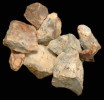 |
 |
The most common colors range from a light tan to brown and gray to blue with a mottled creamy gray-blue being the most common. | Northeastern North Carolina | ||
|
Longview Chert Knox variation |
 |
 |
 |
Primarily reddish, but white to gray colors do occur | Western North Carolina | Longview Member of the Knox formation |
| Macot Dolomite / Chert |
 |
 |
 |
Ranges from white to a light to medium gray with with mottling or streaking ranging from pink to red or green | Western North Carolina | Mascot Dolomite Formation of the Newala Group |
| Mitchell Chert |
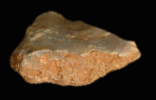 |
 |
 |
Ranges from white to dark brown with the most common colors being from a light cream to yellow, light gray to blue, and pink to violet. | Northeastern North Carolina | |
|
Morrow Mountain Rhyolite AKA: Uwharrie Rhyolite |
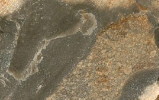 |
|
Homogeneous dark gray to black and many shades of green, flow banding may be present. | Central North Carolina | ||
| Mount Rodgers Rhyolite |
 |
 |
Ranges in color from a dark white to gray and light pink to purple with banding being present | Northwestern North Carolina | Mount Rodgers Formation | |
| Nottoway River Quartzite |
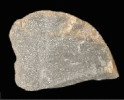 |
 |
Two variations, one is a light blue and the other is a root beer brown. |
Northeastern North Carolina | ||
|
Orthoquartzite (Generic type) |
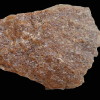 |
 |
Varies | North America | Varies | |
|
Patuxent - Mattaponi Quartzite AKA: Mattaponi Quartzite |
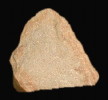 |
 |
Ranges from gray to a white, light yellow, pink or red. range sin color from a dark white to gray, cream to yellow, and pink to red. | Northwestern North Carolina | Patuxent / Mattaponi Formation | |
| Quartz |
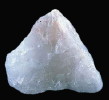 |
  |
Milky white with thin veins |
North America | ||
| Quartzite |
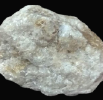 |
   |
Varies from white to gray, or pink and tan in color | North America | ||
| Rhyolite |
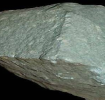 |
  |
Gray to grayish black, flow banding may be present alternating from light to darker gray | Eastern North America | ||
| Shady Chert |
 |
 |
 |
Ranges from a bluish gray to a yellowish gray blue, or white with mottling commonly present. | Western North Carolina | Shady Dolomite Formation |
| Tusquitee Quartzite |
 |
 |
Ranges from a white to a light yellowish gray. | Southwestern North Carolina | Tusquitee Quartzite Member of the Nantahala Formation | |
| Unakite |
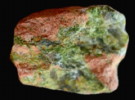 |
 |
Mottled green and pink | Tennessee , North Carolina, Virginia, New Jersey | ||
| Wolf Den Mountain Rhyolite |
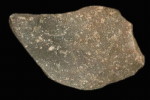 |
 |
Ranges from a medium to dark gray with white speckles. | Central North Carolina |